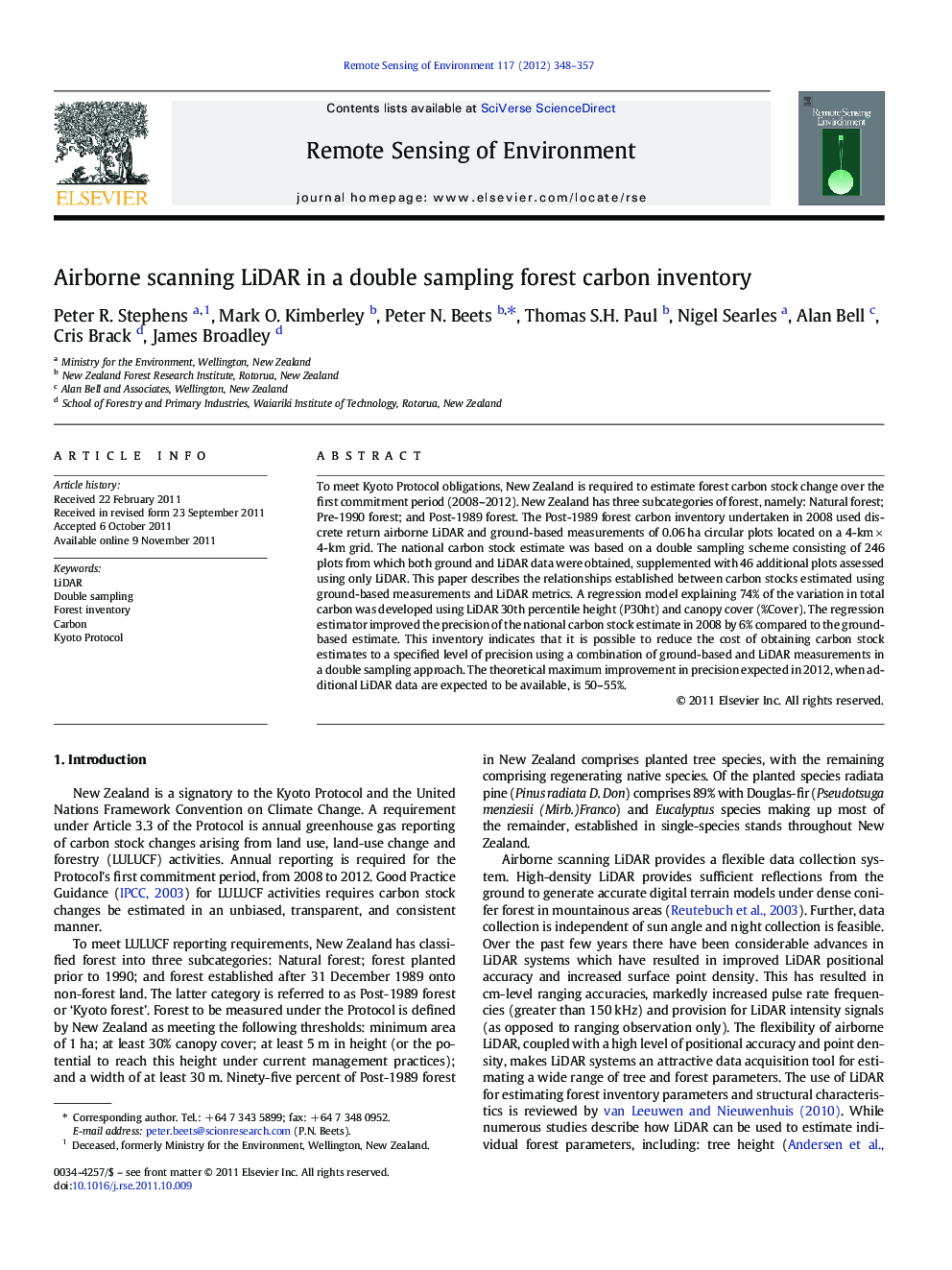| Article ID | Journal | Published Year | Pages | File Type |
|---|---|---|---|---|
| 4459276 | Remote Sensing of Environment | 2012 | 10 Pages |
To meet Kyoto Protocol obligations, New Zealand is required to estimate forest carbon stock change over the first commitment period (2008–2012). New Zealand has three subcategories of forest, namely: Natural forest; Pre-1990 forest; and Post-1989 forest. The Post-1989 forest carbon inventory undertaken in 2008 used discrete return airborne LiDAR and ground-based measurements of 0.06 ha circular plots located on a 4-km × 4-km grid. The national carbon stock estimate was based on a double sampling scheme consisting of 246 plots from which both ground and LiDAR data were obtained, supplemented with 46 additional plots assessed using only LiDAR. This paper describes the relationships established between carbon stocks estimated using ground-based measurements and LiDAR metrics. A regression model explaining 74% of the variation in total carbon was developed using LiDAR 30th percentile height (P30ht) and canopy cover (%Cover). The regression estimator improved the precision of the national carbon stock estimate in 2008 by 6% compared to the ground-based estimate. This inventory indicates that it is possible to reduce the cost of obtaining carbon stock estimates to a specified level of precision using a combination of ground-based and LiDAR measurements in a double sampling approach. The theoretical maximum improvement in precision expected in 2012, when additional LiDAR data are expected to be available, is 50–55%.
► A national network of ground plots was established to estimate forest carbon stocks. ► LiDAR improved the precision of stock estimates by 6% relative to ground plots alone. ► The methodology underpins reporting obligations under the Kyoto Protocol and UNFCCC.
